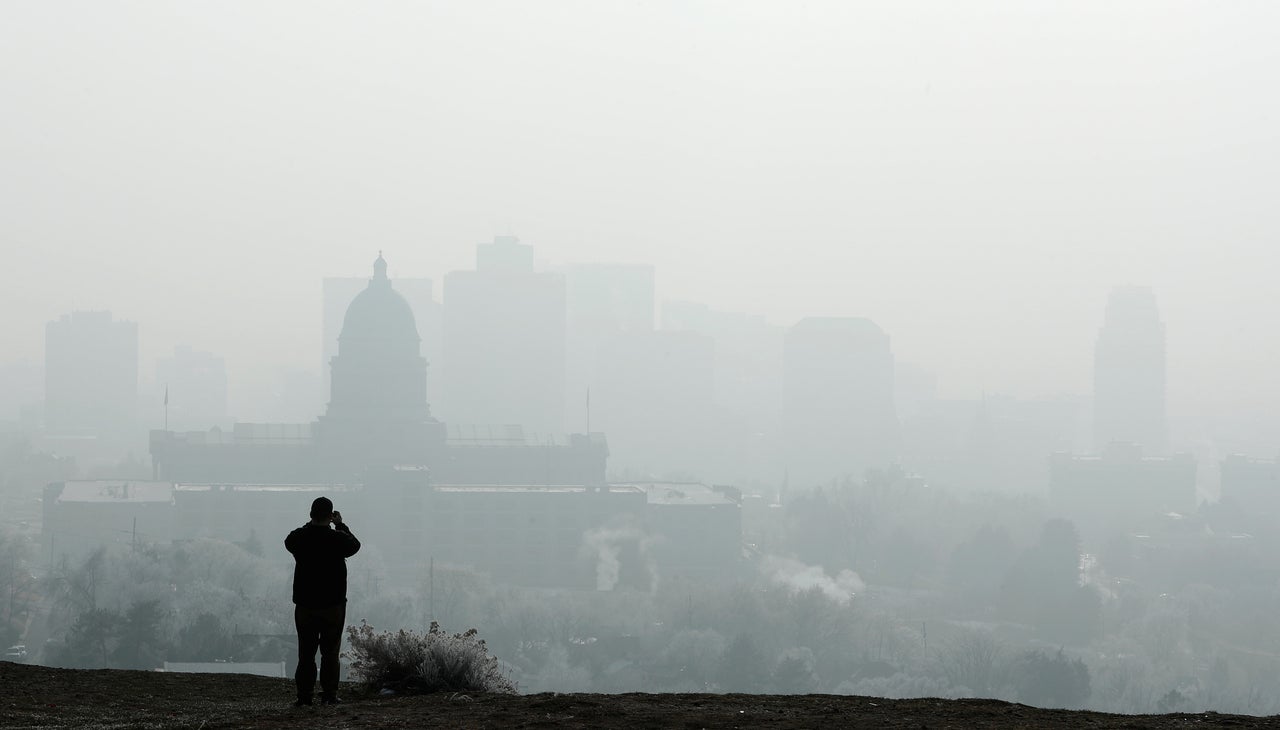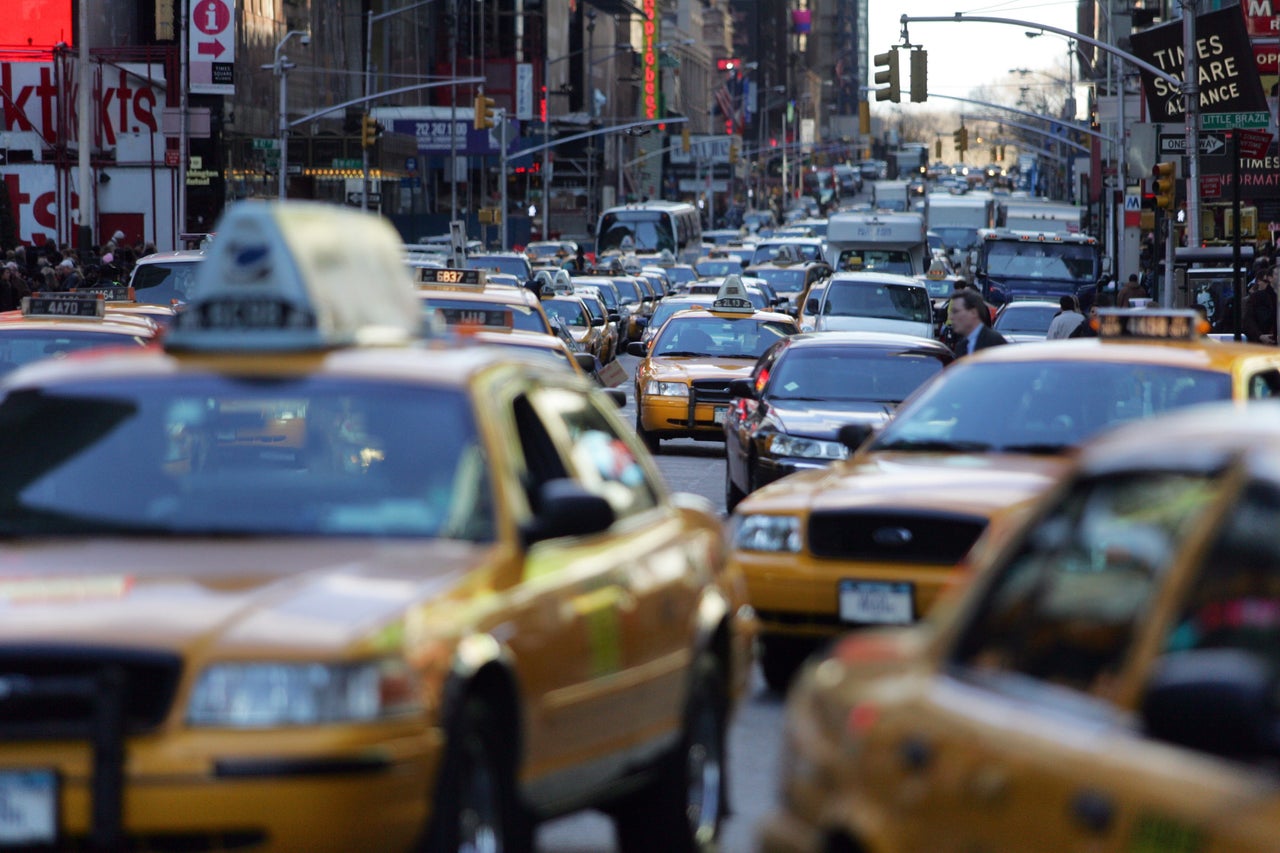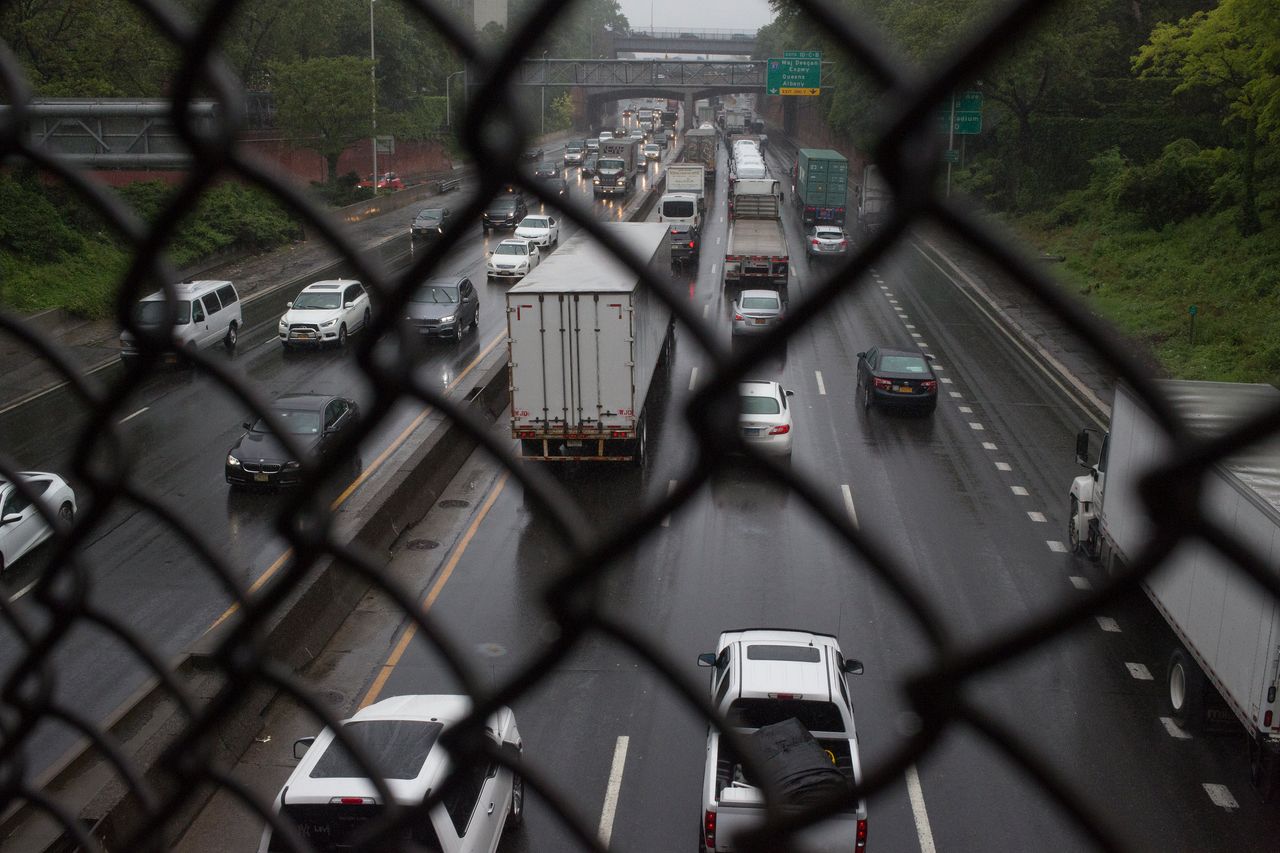Most drivers know the importance of checking tires regularly to see how worn down they are ― if you don’t, your car is an accident waiting to happen. But have you ever thought about where the worn-down stuff actually goes?
About 10-30 percent of the rubber from car tires is lost as they wear out, a European Commission review reports. The majority of that material ends up on, or at the side of, the road, but most of us don’t realize that tiny tire wear particles small enough to be inhaled are also mixed into the air we breathe.
While a number of scientific studies have found tire dust has adverse health effects, the tire industry ― and studies it has commissioned ― suggests otherwise.

Air pollution in the U.S. causes as many as 200,000 premature deaths each year. Motor vehicles are a major source of this pollution. Exposure to pollutants from motor vehicles can cause lung and heart problems and early death, according to the Environmental Protection Agency.
Although significant work has gone into researching the contribution of emissions from exhaust pipes to air pollution, emissions such as those produced by tire wear have been largely overlooked, professor Frank Kelly, chair in environmental health at King’s College London, told HuffPost.
There is much that needs to be investigated, not only when it comes to the potential health effects but also around what actually goes into tires.
Since the recipes manufacturers use for their tires are generally kept under wraps, exactly what these tire wear particles contain is “a bit of a black box,” said Kelly, who provides policy support on air pollution to the World Health Organization.
The findings of a study co-authored by the academic in 2013 suggest that reducing exposure to tire dust would likely lead to improvements in health. But more research is needed to better understand the health effects of tire wear particles, Kelly said, especially as non-tailpipe emissions ― from brake pads and road surfaces as well as tires ― become increasingly important while exhaust emissions are brought under control.
The tire industry, however, has pushed back on suggestions that tire wear particles have health effects. The Tire Industry Project ― an industry body chaired by the three biggest tire manufacturers, Michelin, Bridgestone and Goodyear ― says it is working to develop a better understanding of the possible health and environmental effects of tire and road wear particles (TRWP).
As part of this ongoing work, it has commissioned a series of peer-reviewed publications. “The key takeaway from TIP’s research so far has been that the presence of TRWP presents no significant risk to humans and the environment,” Philippe Fonta, the managing director of TIP, told HuffPost by email.
Cyrille Roget, global head of scientific and innovations communications at Michelin Group, told HuffPost: “All the studies that we have been looking at indicate that those particles in fact do not present any danger.”
Despite repeated requests, Michelin did not provide HuffPost with these studies. Michelin did say it is developing a tire with a biodegradable tread made from material such as hay or beets.

Concerns over tire particle pollution also raise questions about frequently cited ideas for tackling vehicle-related pollution, such as electric cars.
Electric vehicles (EVs) are being touted as one of the most promising solutions to the air pollution crisis, especially in cities. But while they can significantly reduce tailpipe emissions, they won’t tackle the effects of non-tailpipe emissions from the likes of tire waste.
Jonathan Grigg, professor of pediatric respiratory and environmental medicine at Queen Mary University London, told HuffPost that cities should go further than just promoting EVs and genuinely rethink urban transport to move away from private car use.
“Yes, we can achieve a lot with EVs, but we shouldn’t lose sight of the fact that we need to be able to move around our cities in different ways than just individual cars,” said Grigg, whose research focuses on air pollution and health.
Cities around the world are experimenting with ways to get vehicles off the streets. Los Angeles is phasing out heavy-duty diesel trucks from its port and overhauling the mass transit system, while Norway is replacing car parking spaces with bike lanes and closing certain streets to private traffic in its capital city, Oslo. Brussels and Ghent in Belgium have also been experimenting with car-free initiatives, with mixed success. In Paris, major intersections are being redesigned to prioritize pedestrians and cyclists over vehicle traffic.
There’s a long way to go, however, not least of all in America. “In the current anti-regulatory political climate of the U.S., government officials are attempting to downplay the health impacts of poor air quality,” Natalie Nava, project leader at the environmental group Greenpeace USA, told HuffPost. “But don’t be fooled ― the air we breathe is important. If the government and companies fail to take action to improve our air, we will be dealing with a global health catastrophe.”
CORRECTION: A previous version of this story indicated Los Angeles is phasing out diesel trucks. In fact, it is the port of Los Angeles that is doing so.
For more content and to be part of the “This New World” community, join our Facebook Group.
HuffPost’s “This New World” series is funded by Partners for a New Economy and the Kendeda Fund. All content is editorially independent, with no influence or input from the foundations. If you’d like to contribute a post to the editorial series, send an email to thisnewworld@huffpost.com
